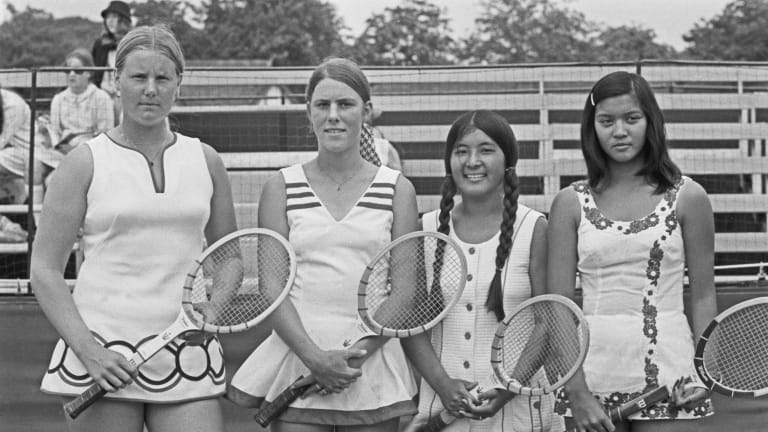When Ann Kiyomura-Hayashi (née Kiyomura) was a young girl, her mother, Hisayo, only had two demands: learn to play the piano and learn to play tennis.
This was how it went growing up 20 miles south of San Francisco in San Mateo. Hisayo taught piano for a living and had also been an excellent player in Japan prior to World War II. Kiyomura’s father, Harry, primarily a maintenance mechanic manager, was also a tennis instructor.
Kiyomura found herself thoroughly engaged by tennis—and, soon enough, exceptionally good at it. Fifty years ago, at the age of 17, she won the Wimbledon junior singles title, beating a 16-year-old left-hander from Czechoslovakia named Martina Navratilova in that 1973 final. Two years later at the All England Club, Kiyomura partnered in the doubles with an excellent Japanese player, Kazuko Sawamatsu. Unseeded, the two competed superbly. In the finals, they beat the seasoned team of Francoise Durr and Betty Stove by the unusual score of 7-5, 1-6, 7-5—a victory that had a global impact.
“In the United States, it started a tennis boom across the Asians,” Kiyomura said. “Asian parents saw that they could incorporate sports instead of just academics. In Japan, the whole country was watching. It particularly meant a lot for women.”
To take in Kiyomura’s journey is to see how much tennis has changed over the last half-century. That includes everything from the granular detail of how she won points, to the more macro matter of what it meant to be such an accomplished women’s player.
The iconic player of Kiyomura’s youth was her fellow Californian Billie Jean King. That meant serve-and-volley, a skill the 5-foot-1 Kiyomura mastered brilliantly, as she moved forward to adroitly read the direction of incoming returns and passing shots. “It just suited me,” she said.
According to Mona Anne Guerrant, one of Kiyomura’s doubles partners, “She had great hands. She was always in the right place.”
By 1972, Kiyomura had become the top-ranked junior in America. In those days, though, there were no faraway tennis academies, no agents with endorsement deals, no overtures from her parents’ homeland of Japan. Even college scholarships for women were negligible, Title IX only passing that same year.
So it was that in the spring of 1973, Kiyomura headed off to England, the only American women in the junior event’s singles draw. “I had never been there, did not what to expect,” she said. “It was the beginning of the beginning. It’s great to look at the draw and see how many of them I played on the tour with.”
In the quarterfinals, Kiyomura beat a future Roland Garros singles champion and notable BBC presenter, Sue Barker, 6-2, 6-1. Next came a three-setter versus an eventual Top 10 player, Australian lefty Dianne Fromholtz. After losing the first set, 7-5, Kiyomura won the next two, 6-3, 6-3.
“None of us had heard of anyone else,” she said.
That included Navratilova, also making her Wimbledon debut that year. In two tight sets, Kiyomura won, 6-4, 7-5.
“Martina had the game, but wasn’t quite as powerful as she later became,” Kiyomura said. “The biggest thing I remember from that match was that she cried so hard and she was so upset that she lost. She really, really wanted that title. I never beat her again in singles or doubles. She was the best quick learner. I taught her how to play backgammon and she got it so quickly.”
